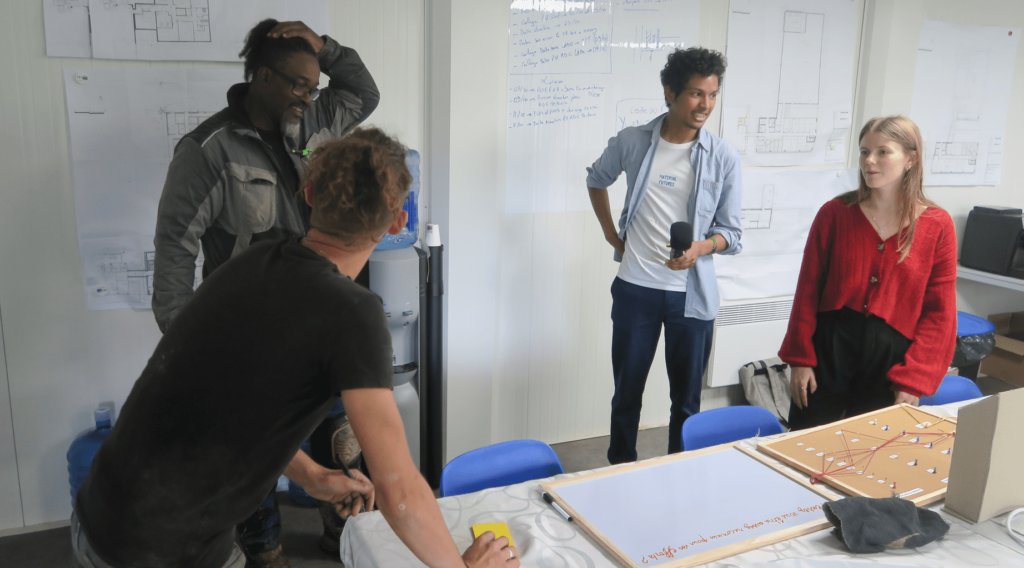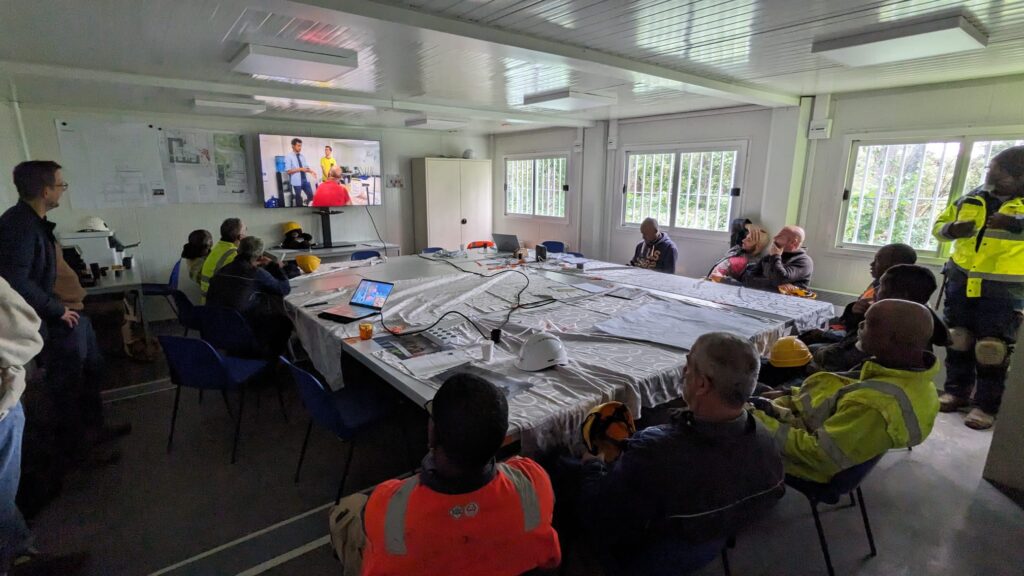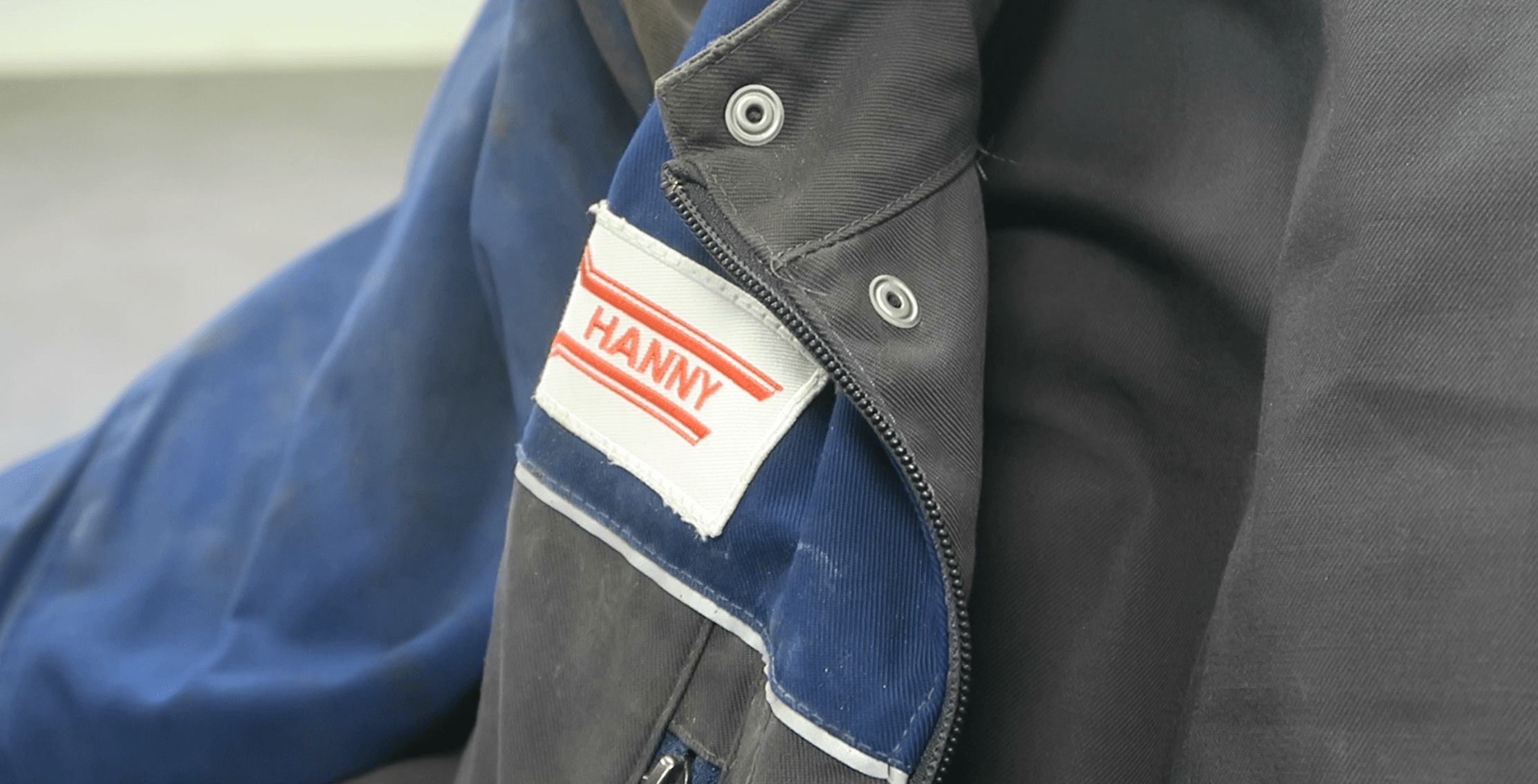Action research through design
INCLUSION ON THE PLATEAU DE SACLAY
When the question of inclusion on the Plateau de Saclay was raised, our focus shifted to those who remain unseen and how we could shed light on their stories.
Context
A research project that explores the sense of belonging on the Plateau de Saclay from the perspective of the people who construct and maintain it.
Objectives
This project seeks to determine the extent to which those involved in the construction and maintenance of the Plateau de Saclay experience a sense of belonging both in relation to their workspace and in their perception of the Plateau as a whole.
Hypothesis
When exploring the Plateau de Saclay, a significant portion of the environment we encountered is still under construction. Every day, we hear the sounds of cranes, shovels, and drills from various construction sites, which are shaping the future research centers, universities, and student accommodations.
They are meticulously designed by architects and engineers and brought to life by construction workers, the individuals who are actively responsible for materializing these ambitious projects. Despite being the initial founders of the Plateau, it appears that most residents do not engage with them, resulting in their exclusion from the Plateau’s livelihood.
Our hypothesis leads us to believe that they may lack a sense of belonging, notably a sense of recognition, which in turn may make them feel disconnected from the Plateau de Saclay’s residents and its population.
Methodology

Initially we set out to explore the perceptions and experiences of construction workers and maintainance personnel on the Plateau de Saclay. We examined the assumptions we held about construction workers, acknowledging the potential lack of recognition they might face and the existing divisions between two primary groups on the Plateau: constructors and maintainers on one side and students and educational staff on the other.
The central research question was formulated as follows: “Does the Plateau de Saclay provide a sense of belonging to those who construct and maintain it?” To answer this question, we visited various construction sites across the Plateau, engaging in conversations with different individuals, each with distinct roles, including 5G antenna builders and the Metro Line 18 constructors. During our visits, we encountered Alain, a construction worker responsible for constructing the Thales research center. Who then led us to meet David, the construction site manager, who warmly welcomed us to interview 6 workers from the team (out of 14).
d
Participative design tools

We designed four participatory tools to support our discussions:
- Data Strings Board: We developed a board to showcase various profiles within the team. Participants are invited to pull a string across the board, visually representing the information that corresponds to their situation.
- One-Word Box: Participants were invited to describe their work in a single word or two.
- The Poster: A poster featuring the phrase “The buildings in Paris-Saclay have a face and a profession” aimed to capture their experiences on the construction site.
- Recognition Whiteboard: A whiteboard presented a key question, “Do you feel recognized enough for your efforts?”
While these tools were valuable for data collection, our most insightful and rich source of data came from in-depth interviews with the construction workers.
From our data collection and analysis, several key findings emerged:
Data Strings Board:
Demographics
- All the construction workers in our study were men.
- We observed two predominant age groups: the first group was between 26-35 years old, and the second group was between 46-55 years old.
Workload:
- Each worker maintained a demanding schedule, working seven hours per day, five days a week.
Experience and Longevity:
- The group shared a broad range of experience, spanning from 5-8 years to 31-35 years in the industry. This suggests that many people remain committed to this line of work over the long term.
One-Word Box:
Words and Phrases:
- Frequently mentioned words: “Organization,” “Precision,” “Fellowship,” “Passion,” “Investment,” “Future,” “Creation,” “Excellent!,” “Managing,” “Quality, conviviality, respect, social skills, knowledge”
Passion/Pride for Work:
- Most of the workers emphasized their passion for their work, regardless of the project.
The Poster:
- Quoting feedback from the workers: “Experience is the routine, the repetition of our task: floor-wall-beam-slab, etc.” “Organization, precision, fellowship” “Passion, investment” “People, Sharing“
Recognition Whiteboard:
- Most participants expressed dissatisfaction with the level of recognition they received for their efforts. They suggested that recognizing their work could be as simple as acknowledging the collective work behind a construction project, revisiting retirement age policies, or highlighting the meaningfulness of their work.
Results
From the data we collected, it became evident that most of the workers expressed a deep passion for their work, regardless of whether it’s on the Saclay project or elsewhere. Additionally, all of them commit a minimum of 35 hours per week to their work, with some having dedicated many years to their craft, Despite the physical demands and varying weather conditions, as highlighted by one of our interviewees, David.
From this research, we have gained insight into the fact that these construction workers don’t exactly seek inclusion due to the limited time at their worksites. Although they do appreciate a greater recognition for their dedication and hard work. For this particular construction team, their sense of belonging seems to be rooted not in the Plateau de Saclay but in the close bonds they share within their team.
d
Short documentary
Les Mains qui construisent Saclay – YouTube
Through our short documentary, we allowed a construction team (construction workers, the team leader and the construction site manager) we met on-site to share their daily challenges and express the significance of their work.
It was important to present the short documentary to the construction team in order to fully involve them in the project and obtain their consent to share their stories.

Discussion
“If you weren’t here, this wouldn’t exist, and we wouldn’t be able to say what we have to say and be heard.”
Antoine, a construction worker at Hanny for over 15 years.
This type of social initiative offers a chance for people who often go unnoticed to step into the spotlight and receive the recognition they deserve. It also opened our eyes to the everyday reality of these construction workers and allowed us to gain insights into their field of expertise.
It draws parallels to the iconic ‘Lunch Atop a Skyscraper’ photograph from the 1930s, which brought the immigrant experience in New York at the turn of the century.
Our hope is that this story fosters a greater sense of respect and appreciation for the people who contribute to the construction of the buildings we inhabit.
Acknowledgments
We would like to thank the entire teaching team at Telecom Paris who organized this workshop and allowed this construction team to express themselves through us. Many thanks to the construction workers, the team leader and the construction site manager from Les Etablissements HANNY for your warm welcome and valuable contribution to this project.
© Santa RAMAHERISON, Andrei OSTANIN, and Holly BARTLEY Students of the Master 2 Design Research and the Master 2 Interaction, Graphism and Design
October 2023
